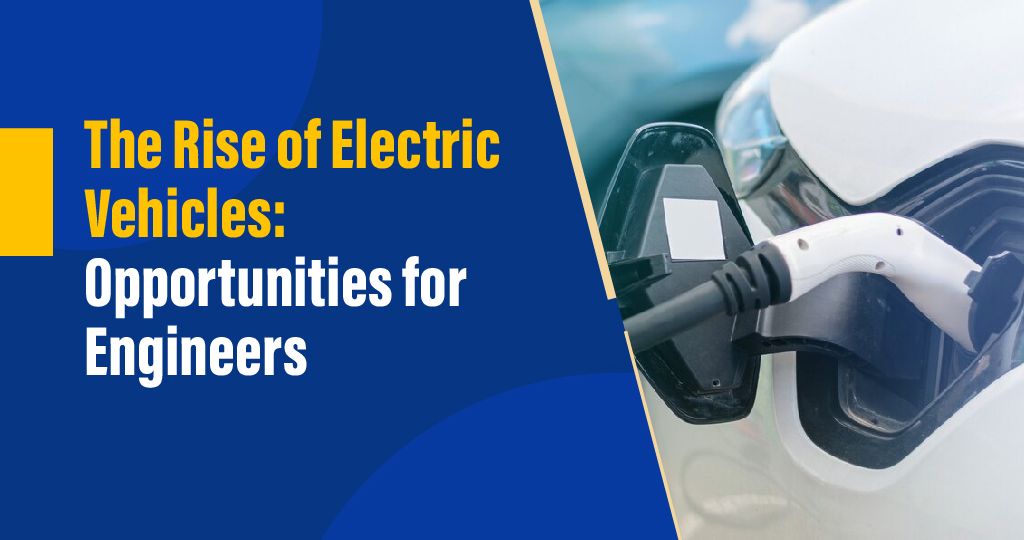
Introduction
Electric vehicles have revolutionized how we think about and relate to transportation. But exactly what are electric vehicles and why are they so very important in the world of mobility? As electric vehicles continue to reshape the environment, engineers are faced with unprecedented opportunities and challenges.
This golden era of innovation will change the game in various industries and present new frontiers for engineers. This makes the times of future electric mobility exploration both thrilling and very interesting.
The Shift Toward Sustainable Transportation
Environmental Benefits of EVs
Traditional vehicles powered by fossil fuels produce harmful greenhouse emissions; in comparison, electric cars emit zero tailpipe emissions – making them essential in combating climate change and increasing their popularity thanks to being eco-friendly.
Government Policies and Incentives
Governments around the globe are creating incentives like tax credits, subsidies and stricter emission regulations to hasten electric vehicle adoption. Such policies foster innovation among engineers by encouraging them to develop cutting-edge solutions.
Emerging Technologies in EVs
Battery Innovations
Batteries are at the core of every electric vehicle (EV), and engineers have turned their attention towards developing advanced materials like solid-state batteries and lithium-sulphur technology in order to increase energy density and charge speed, ultimately making EVs more cost-effective and energy-efficient. These breakthroughs will make future electric vehicle (EV) models even more cost-effective and affordable than before.
Autonomous Driving Integration.
Combining electric vehicles (EVs) and autonomous technology is revolutionary. Sensors, AI algorithms, and machine learning models require careful engineering for safety and reliability.
Smart Charging Solutions
Wireless charging and smart grids are the key to seamless energy management. Engineers are focusing on technologies that reduce grid stress and balance demand. They also want to enable vehicle-to-grid interactions.
Opportunities for Engineers in EV Development
- Mechanical Engineering Roles: Mechanical engineers are crucial in designing lightweight, aerodynamic structures that improve efficiency. Materials science and thermal engineering are also important areas.
- Designing Lightweight Structures: Reducing vehicle weight without compromising safety is a primary goal. Engineers work on innovative materials like carbon fiber and aluminum composites to achieve this.
- Electrical and Electronics Engineering: Electrical engineers are the pioneers of EV technology. From motor controllers to inverters, they design it all. They optimize power systems to ensure efficient energy conversion.
- Power Electronics and Control Systems: Power electronics are essential to managing energy flow for EVs. Engineers in the field of power electronics develop advanced control systems that enhance performance and reliability.
- Software Engineering Contributions: Software engineers design embedded systems that power everything from infotainment to autonomous driving.
- Embedded Systems and AI Applications: Engineers are developing AI-driven systems for real-time decision-making, enhancing vehicle safety and efficiency.
Challenges Facing Engineers in the EV Industry
Battery Efficiency and Range Anxiety
The biggest challenges in the EV industry are to enhance the capacity of the battery and minimize charging times. Engineers innovate to develop more efficient, high-capacity batteries that can ensure longer driving ranges and quicker recharge cycles.
Additionally, they are trying to overcome the psychological barrier of range anxiety by improving the performance of the battery, expanding the charging infrastructure, and implementing advanced energy management systems. These efforts aim at increasing user confidence and to make EVs a much more practical and appealing alternative for daily transportation.
Manufacturing and Supply Chain Bottlenecks
The demand for critical materials like lithium and cobalt has exposed supply chain vulnerabilities. Engineers must find alternative solutions, such as recycling old batteries or exploring new materials.
Collaborations and Innovations in the EV Space
Partnerships Between Carmakers and Tech Companies
Carmakers collaborate seamlessly with tech giants to integrate software, hardware, and cloud solutions.
The Role of Startups in Driving Innovation
Startups are known for their creative thinking and agility. They frequently explore unfamiliar territories – like developing flying or solar-powered cars – leading to great advancement in innovation and productivity.
Educational and Skill Requirements for Aspiring Engineers
Key Courses to Pursue
Electrical engineering, materials science, and computer programming courses are foundational for entering the EV field.
Certifications and Specializations
Specialized programs in electric vehicle (EV), artificial intelligence (AI), and battery management may give aspiring engineers an edge in the competition.
The Future of Electric Vehicles and Engineering
Advancements in Vehicle-to-Grid Technology
Vehicle-to-Grid (V2G) technology enables electric vehicles (EVs) to serve as mobile energy storage units and supply power back into the grid – opening up exciting engineering possibilities and spurring future innovation.
The Vision of Fully Autonomous EV Fleets
Imagine a future where autonomous electric vehicle (EV) fleets act like shared taxis to reduce congestion and emissions – this vision is becoming a reality thanks to engineers at work!
Conclusion
The automobile industry is going through a very transformational era with the coming of electric vehicles, bringing excitement to engineers through these new opportunities. The designs of next-generation batteries to innovative software solutions developed, engineers are at the front of shaping this revolution. Embracing the challenge and pushing the limits of technology, they will have a great role to play in driving the movement forward, creating a sustainable and greener future for the future generations.
